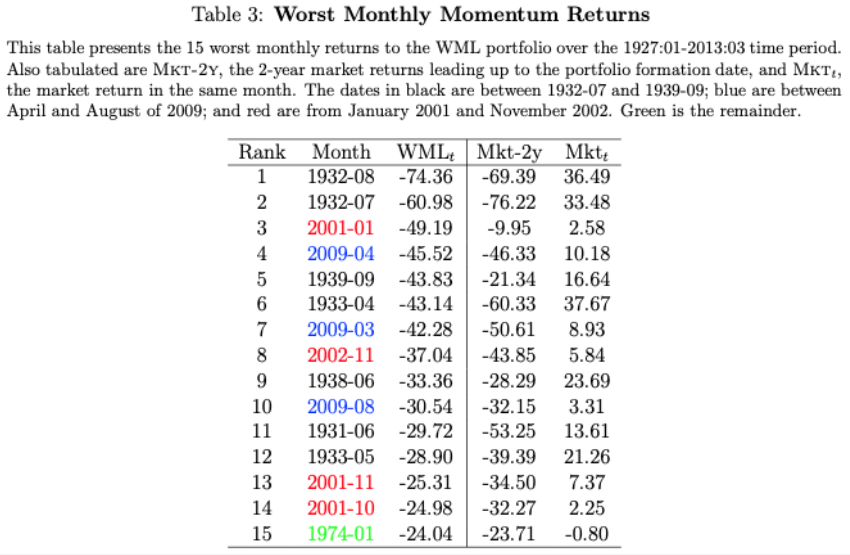
The time frame is November 19, 2009-present. The figure below compares a short SPXS position rebalanced monthly (in green) with SPY (in blue). If we short SPXS instead of going long SPXL, significant improvements are seen. That is the intent of the THS reported in the previous article. Or, one can combine SPXL with a long-term treasury ETF to reduce drawdown.

Here, again, there is need of tactical methods to get out of SPXL in bear equity markets and into SHY. The drawdown will be larger than these numbers if all of 2008 was included.

This compares to SPY with a maximum drawdown of -28.6% and a total return of 133.7%. The maximum drawdown is very high (-71.3%), and the total return is 448.8% (CAGR = 34.3%). The time frame is November 5, 2008-present, so some of the bear equity market is present. Presented below is a figure of SPXL (in green) versus SPY (in blue). Similar benefits are seen between shorting SPXS versus holding a long Direxion Daily S&P 500 Bull 3X Shares ETF ( SPXL) position. Of course, if we combine a tactical strategy to this scenario, such as switching to SHY when a 5-month moving average is crossed, we can have the best of both worlds, minimum drawdown in bear equity markets and maximum growth in bull equity markets. The benefits are significant in shorting SDS (and rebalancing) versus buying and holding SSO. The total return is 355.2%, compared to SPY's 89.4%. But the growth of a short SDS position rebalanced monthly is excellent during the bull run. The maximum drawdown is -78.3%, still much more than SPY. The total return is the bar chart on the top right, and volatility is the bar chart on the bottom right. The green curve is short SDS, and the blue curve is SPY. The back-test results for a short SDS rebalanced monthly are compared to SPY's results from Jto the present. SSO has just now recovered from the drawdown, and its total return is equal to SPY at the present time, 89.2%.īut if we short SDS, we see an entirely different picture. The maximum drawdown for SSO is -84.7%, while SPY has a maximum drawdown of -55.2%. Notice that during the bear equity market in 2008, SSO has a drawdown significantly greater than SPY, but has greater growth in the bull equity market (2009-present). Trading commission fees and interest costs for buying on margin are not included. The two bar graphs on the right are total return on the top and volatility on the bottom. The green curve is SSO and the blue curve is SPY. The figure shown below is a comparison of SSO and SPY in the June 20, 2006-present time frame. SPY, of course, goes back much farther, but the calculations will be performed from mid-2006-present. The data on SSO and SDS go back to mid-2006, so the back-testing includes the large bear equity market of 2008. I will start by looking at ProShares Ultra S&P 500 ETF ( SSO) and SPDR S&P 500 Trust ETF ( SPY), and comparing their performance versus shorting SDS.

In this article, I will present some of the research I have performed comparing short inverse leveraged ETFs with long leveraged ETFs and their unleveraged counterparts. So this article's information is only useful if you own a taxable account.īut the more I have looked into the benefits of shorting inverse leveraged ETFs like ProShares UltraShort S&P 500 ETF ( SDS), Direxion Daily S&P 500 Bear 3X Shares ETF ( SPXS), and Direxion Daily 30-Year Treasury Bear 3x Shares ETF ( TMV), the more I like what I see. And you cannot short ETFs in nontaxable retirement accounts.

Some platforms do not allow you to short inverse leveraged ETFs. (Since writing this article, I was informed by Harry Long that he had written a book on this subject, and wanted to be cited in this article). There does not seem to be much literature on short selling inverse leveraged ETFs with periodic rebalancing. As I have developed simple hedge strategies such as the Tactical Hedge Strategy, THS, I have become intrigued with the idea of using short inverse leveraged ETFs instead of long leveraged ETFs.


 0 kommentar(er)
0 kommentar(er)
